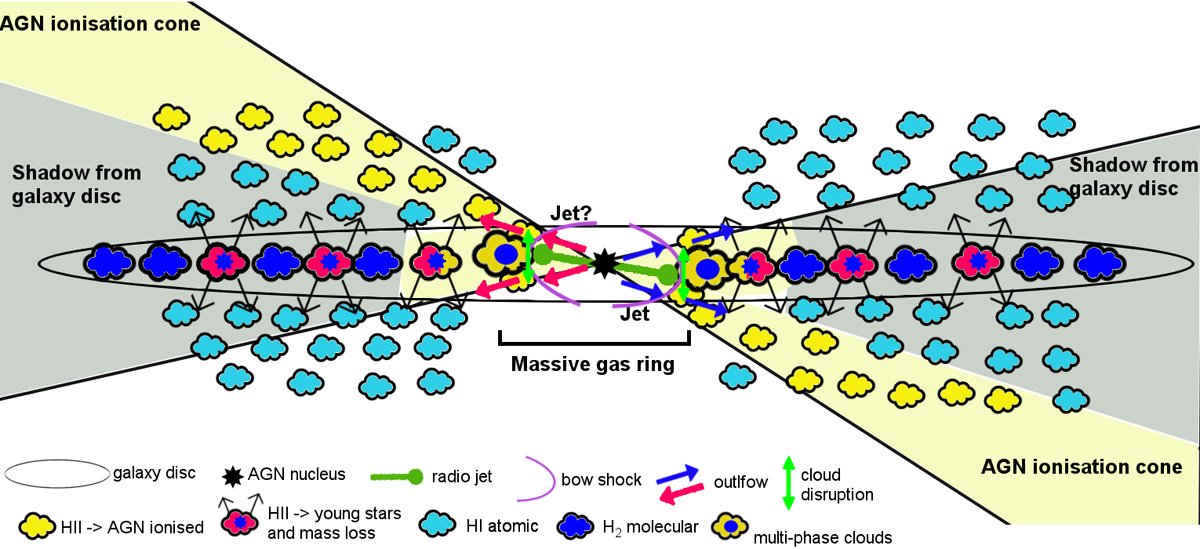Fig. 12.

Simple cartoon-like diagram to highlight the interaction of the AGN with its host galaxy in HE 1353−1917. The host galaxy is seen fully edge-on but perpendicular to the ionisation cones. In this orientation our observing position in reality would be about 5° above the disc plane and an unknown azimuth angle to the right so that we can look down the ionisation cone into the nucleus. The AGN ionisation cones and radio jet are nearly perpendicular to the rotation axis of this galaxy disc in our proposed scenario. The AGN ionisation is then able to illuminate extra-planar material above the disc plane. This material was likely expelled from the disc due to mass-loss from star formation and supernova explosions. The gas becomes visible only on one side of the galaxy due the shadowing of the ionisation cone given the intrinsic thickness of the dusty galaxy disc. A jet is hitting the inner wall of a molecular gas ring, which significantly enhances the cloud turbulence and disrupts the clouds in the vertical direction. The fast outflow in the ionised gas is then accelerated, either by the radiation pressure or the hot outflow from the jet, and moving around the dense material at the inner edge of the dense gas ring in the disc plane.
Current usage metrics show cumulative count of Article Views (full-text article views including HTML views, PDF and ePub downloads, according to the available data) and Abstracts Views on Vision4Press platform.
Data correspond to usage on the plateform after 2015. The current usage metrics is available 48-96 hours after online publication and is updated daily on week days.
Initial download of the metrics may take a while.


